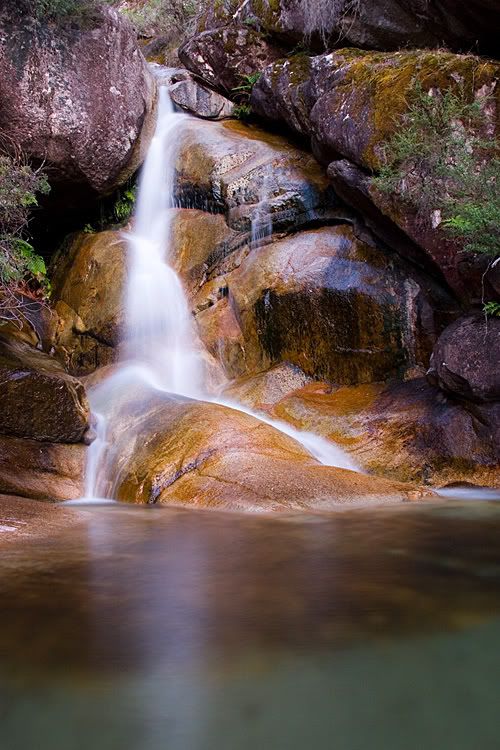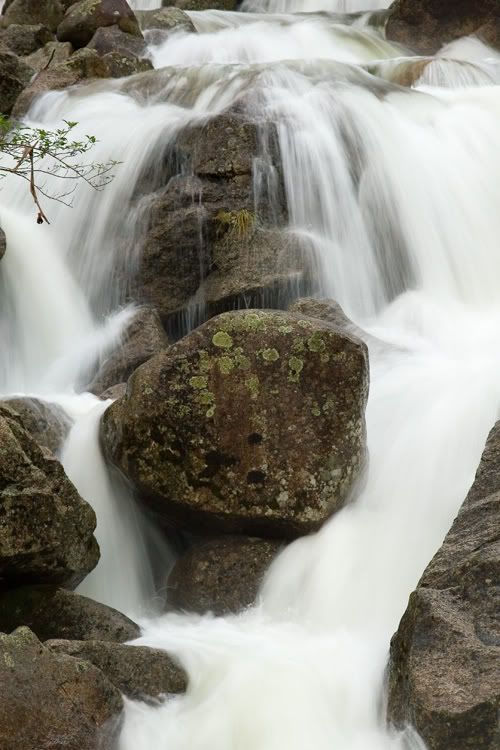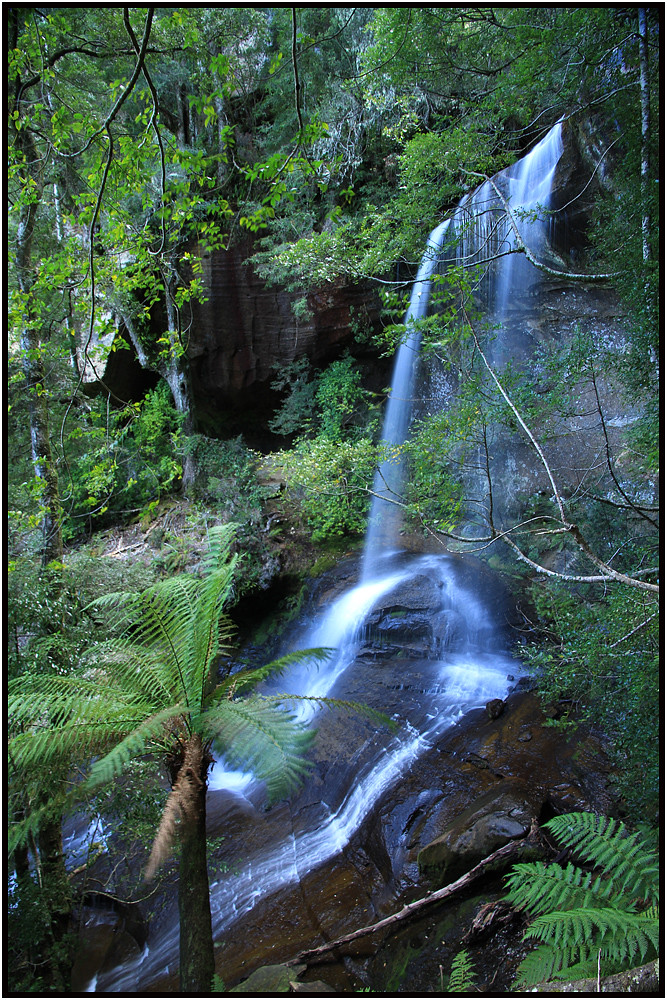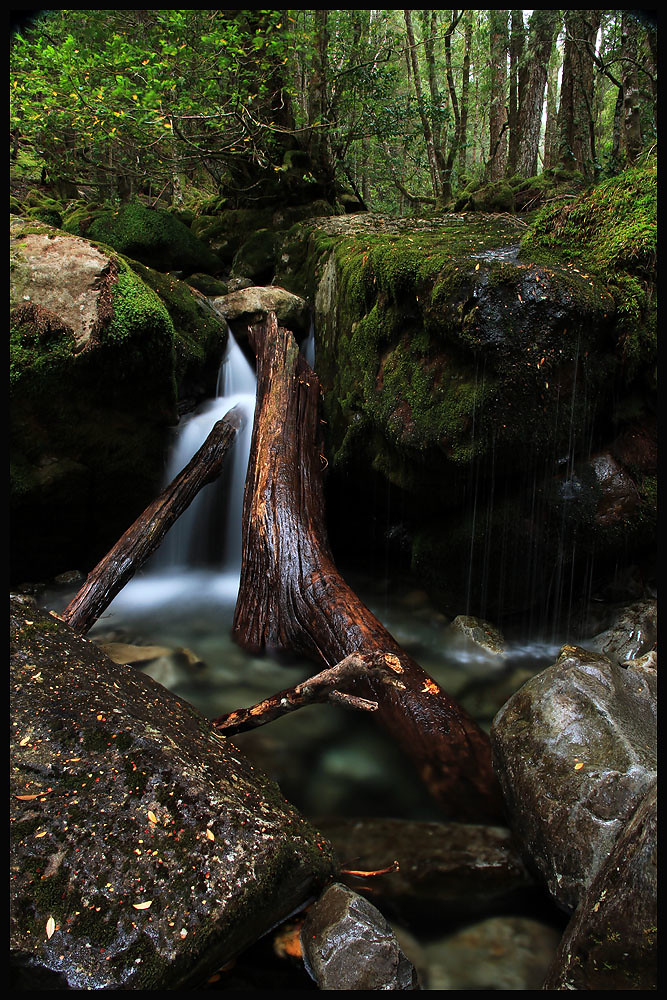I'm a bit late to this party- but as an addicted waterfall photog, I can offer the following advice:
1) Regardless of the shutter speed, try to avoid going below f/11, as diffraction will make your image soft and lacking in contrast.
2) Trying to use a formulaic approach to shutter speed is pointless, as different waterfalls move at different speeds. When shooting a waterfall, I will shoot from 1/20 or so to say 3 sec, so I can later view the results on a big screen and see which one I like the best. Sometimes the results are surprising.
3) The BEST friend of a waterfall photog is a tripod, preferrably with a quick release. Alot of my pics are taken from in the water itself, and a tripod makes it much easier to keep everytihg dry. I have a Canon 24-105L IS lens, which will allow me to shoot at say 1/10 or 1/13 with some level of sharpness, but not a levle I'd consider acceptable for printing out at say 8x12 size. For slower than that, IMHO you need a tripod. Rocks and logs are good in a pinch, but have two real drawbacks in my opinion. 1) They do not allow you to position the camera freely to get the angle you want, and 2) they are a great way to let your camera roll into the water, which is....uh...regrettable.
4) The second best friends of a waterfall photog are a really good circular polariser and/ or a neutral density filter. I really need to upgrade my el-cheapo (if you can call $80 el cheapo) Hoya CP- it is shockingly bad. These filters let you get the effect you got in the first picture with a wider aperture, which in turn allows for better image quality.
My currently-lusted-after filter is the Singh Ray Vari-ND filter- it's a variable neutral density filter, which allows you to "dial" the ND effect, allowing you to take off betten 2 (I think, or maybe 3) stops to a whopping 8 stops, so you can take waterfall pics in the broad daylight without blowing out the highlights in the picture. Pricey, but I still want one badly.


 A2
A2
 B2
B2
 C2
C2




